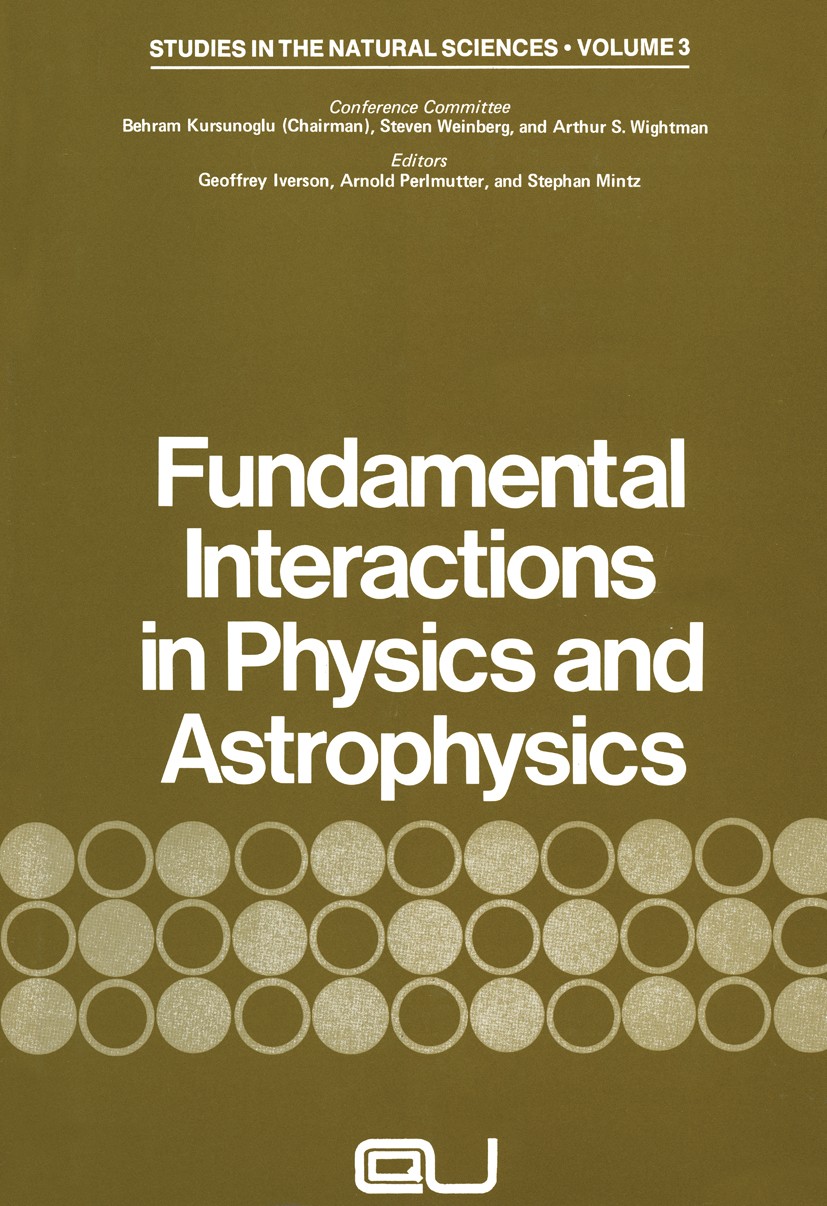| 书目名称 | Fundamental Interactions in Physics and Astrophysics | | 副标题 | A Volume Dedicated t | | 编辑 | Geoffrey Iverson,Arnold Perlmutter,Stephan Mintz | | 视频video | http://file.papertrans.cn/350/349996/349996.mp4 | | 丛书名称 | Studies in the Natural Sciences | | 图书封面 |  | | 描述 | The present volume is a compilation of the talks presented at the 1972 Coral Gables Conference on Fundamental Interactions at High Energy held at the University of Miami by the Center for Theoretical Studies. The volume contains, in addition, contributions by B. Kursunoglu and G. Breit, which were not actually presented, but are included as tributes to Professor P.A.M. Dirac, to whom the Conference is formally dedicated. Again this year the theme, style and format of each session was in most cases the responsibility of the section leaders who also cons~ituted the Conference Committee. This organization of the conference meant that each section was coherent and essentially self-contained, and as weIl, allowed for spirited panel discussions to critically summarize, and to indicate new directions for future research. This volume is divided into four sections on Constructive Field Theory, and Advances in the Theory of Weak and Electro magnetic Interactions, Cosmic Evolution,and New Vistas in the Theory of Fundamental Interactions. Each section represents a thorough, penetrating survey of one of the most active research programs of theoretical physics. Thanks are due to typists Mrs. He | | 出版日期 | Book 1973 | | 关键词 | astrophysics; field theory; theoretical physics | | 版次 | 1 | | doi | https://doi.org/10.1007/978-1-4613-4586-2 | | isbn_softcover | 978-1-4613-4588-6 | | isbn_ebook | 978-1-4613-4586-2 | | copyright | Springer Science+Business Media New York 1973 |
The information of publication is updating

|
|
 |Archiver|手机版|小黑屋|
派博传思国际
( 京公网安备110108008328)
GMT+8, 2026-1-2 10:25
|Archiver|手机版|小黑屋|
派博传思国际
( 京公网安备110108008328)
GMT+8, 2026-1-2 10:25


